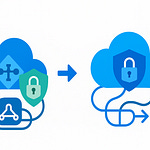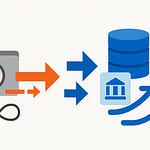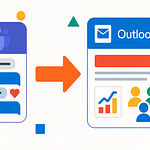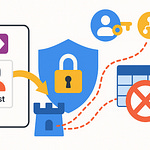If you’re wondering why Copilot hasn’t magically boosted productivity in your company, you’re not alone. Many teams expect instant results, but instead they hit roadblocks and confusion. The problem isn’t Copilot itself—it’s the way organizations roll it out. We’ll show why so many deployments stall, and more importantly, what to change to get real ROI.
Before we start—what’s your biggest Copilot headache: trust, data quality, or adoption? Drop one word in the comments.
We’ll also outline a practical 4‑phase model you can use to move from demo to measurable value. Avoid these critical mistakes and you’ll see real change—starting with one myth most companies believe on day one.
The Instant Productivity Myth
That first roadblock is what we’ll call the Instant Productivity Myth. Many organizations walk into a Copilot rollout with a simple belief: flip the switch today, and tomorrow staff will be working twice as fast. It’s an easy story to buy into. The marketing often frames Copilot as a sort of super‑employee sitting in your ribbon, ready to clean up inefficiencies at will. What’s missing in that pitch is context—because technology on its own doesn’t rewrite processes, culture, or daily habits.
Part of the myth comes from the demos everyone has seen. A presenter types a vague command, and within seconds Copilot produces a clean draft or an instant report. It looks like a plug‑and‑play accelerator, a tool that requires no setup, no alignment, no learning curve. If that picture were accurate, adoption would be seamless. But day‑to‑day use tells a different story: the first week often looks very similar to the one before. Leaders expect the productivity data to spike; instead, metrics barely shift, and within a short time employees slip back into their old routines.
Here’s how it usually plays out. A company launches Copilot with a big announcement, some excitement, maybe even a demo session. On day one, staff type in prompts, share amusing outputs, and pass around examples. Within days, questions begin: “What tasks is this actually for?” and “How do I know if the answer is correct?” By the end of the first week, people use it sparingly—more out of curiosity than as a core workflow. The rollout ends up looking less like a transformation and more like a trial that never advanced. So why did the excitement disappear? Hint: it starts with what Copilot can’t see.
The core misunderstanding is assuming Copilot automatically generates business value. Yes, it can help draft emails or summarize meetings. Those are useful shortcuts, but trimming a few minutes from individual tasks doesn’t translate into measurable gains across an organization. Without clear processes and a shared sense of where the tool adds value, Copilot becomes optional. Some use it heavily; others don’t touch it at all. That inconsistency means the benefits never scale.
Research on digital adoption makes the same point: productivity comes when new tools sync with established processes and workplace culture. Staff need to know when to apply the tool, how to evaluate results, and what outcomes matter. Without that foundation, rollout momentum fades fast. The icon stays visible, but it sits in the toolbar like an unclaimed preview. Business as usual continues, while leaders search for the missing ROI.
The truth is, Copilot isn’t underperforming. The environments it lands in often aren’t ready to support it. Launching without preparation is like hiring a skilled employee but giving them no training, no defined tasks, and no access to the right information. The capacity is there, but it’s wasted. Until organizations put as much effort into adoption planning as they do licensing, Copilot will remain more of a showcase than a driver of progress.
And here’s the reveal: the barrier usually isn’t the features or capabilities. It almost always begins with messy sources—and that’s what breaks trust. Productivity doesn’t stall because Copilot lacks intelligence. It stalls because the information it depends on is incomplete, inconsistent, or outdated.
If Copilot is only as smart as the data behind it, what happens when that data is a mess? That single question explains why so many AI rollouts stall, and it’s where we need to go next.
Data: The Forgotten Prerequisite
Which brings us to the first major prerequisite most organizations overlook: data. Everyone wants Copilot to deliver accurate summaries, clear recommendations, and reliable updates. But if the sources it draws from are fragmented, outdated, or poorly structured, the best you’ll get is a polished version of the same inconsistency. And once people start noticing those cracks, adoption grinds to a halt.
The pattern is easy to recognize. Information sits in half a dozen places—SharePoint libraries, Teams threads, email attachments, legacy file shares. Copilot doesn’t distinguish which version matters most; it simply pulls from whatever it can access. Ask for a project update and you might get last quarter’s budget numbers mixed with this quarter’s draft. The output sounds authoritative, but now you’re working with two sets of facts. Conflicting inputs = confident‑sounding but wrong answers = lost trust.
When trust breaks, employees stop experimenting. This is the moment where “AI assistant” becomes another unused feature on the toolbar. Leaders often assume the tool itself failed, when in reality the digital workplace wasn’t prepared to support meaningful answers in the first place.
The root of this problem is that businesses underestimate the chaos of their own content landscape. Over time, multiple versions stack up, file names drift into personal shorthand, and department‑specific rules override any sense of consistency. Humans can often work around the mess—they know which folder usually contains the current version—but Copilot doesn’t share that context. It treats each document, old or new, as equally valid, because your environment has told it to.
This leads to a deeper risk. Bad information flow doesn’t just slow decisions; it actively misguides them. Picture a marketing lead asking Copilot for campaign performance metrics. The system grabs scraps from outdated decks and staging files and presents them with confidence. That false certainty makes its way into a leadership meeting, where the wrong numbers now inform strategy. The credibility cost outweighs any convenience gain.
The solution isn’t glamorous, but it’s unavoidable. AI depends on disciplined data. That means consistent taxonomy so files aren’t labeled haphazardly, governance rules so old content gets archived instead of sticking around, and access policies that align permissions with what Copilot needs to surface. All of this work feels boring compared to the flash of a demo, but it’s the difference between Copilot functioning as a trusted analyst or being dismissed as a toy.
A practical place to start is by agreeing on sources of truth. For each high‑value project or domain, there should be one authoritative location that wins over every duplicate and side file. Without that agreement, Copilot is left to decide on its own, which leads right back to conflicting answers.
From there, leaders often wonder what immediate steps matter most. Think of it as a three‑point starting checklist. First: take inventory of your top‑value sources and declare one source of truth per major project. Second: enforce simple taxonomy and naming rules so people and Copilot alike know exactly which files are live. Third: set retention, archive, and access policies on a clear lifecycle for critical documents, so outdated drafts don’t linger and permissions don’t block the good version. Together, these actions create a baseline everyone can rely on.
The mistake is treating this groundwork like a one‑time IT chore. In practice, it demands coordination across departments and ongoing discipline. Cleaning up repositories, retiring duplicates, enforcing naming conventions—it all takes time. But delaying this step only shifts the problem forward. When AI pilots stumble, users will blame the intelligence, not the environment feeding it.
The good news is that once the foundation is in place, Copilot starts to behave the way marketing promised. Updates feel dependable, summaries highlight the right version, and decisions can build on trustworthy facts. And that consistency is what encourages staff to fold it into their daily workflow instead of testing it once and abandoning it.
That said, even clean data won’t guarantee success if organizations point Copilot at the wrong problems. Accuracy is only one piece of ROI. The other is relevance—whether the use cases chosen actually matter enough to move the needle. That’s where most rollouts stumble next.
When Use-Cases Miss the Mark
When organizations stumble after the data cleanup stage, it’s often because the work is being pointed at the wrong problems. This is the trap we call “use cases that miss the mark.” The tool itself has power, but if it’s assigned to trivial or cosmetic tasks, the returns never justify the investment. At best, you save a few minutes. At worst, you create disinterest that stalls wider adoption.
Here’s what usually happens. Executives see slick demos—drafted emails, neatly formatted recaps, maybe a polished slide outline—and assume replicating that will excite staff. It does, briefly. But when it comes time to measure, nobody can prove that cleaner notes or slightly shorter emails deliver meaningful ROI. The scenarios chosen look futuristic but don’t free up real capacity.
That’s why early pilots face growing skepticism. People ask: is an automated summary worth the licensing fee? Shaving five minutes off a minor task doesn’t move the needle. Where it does matter is in processes that hit hard on time, error risk, or compliance exposure. Think recurring regulatory reports, monthly finance packages, or IT intake requests where 70% of tickets are a copy‑paste exercise. Those are friction points staff actually feel, and where reassigning work to Copilot creates a measurable before‑and‑after.
The simplest filter for picking use cases comes down to three questions: How often does this task happen? How much total time or effort does it consume? And how costly is it when errors slip through? If a candidate task checks at least two of those boxes—high frequency, high effort, or high risk—it’s worth considering. If it doesn’t, it’s probably not a good pilot, no matter how good it looks in a demo.
Starting small and targeted gives you the best shot at traction. Instead of launching Copilot everywhere, pick one team and one repeatable, high‑impact process. For example, have the compliance team automate recurring filings, or the finance team standardize monthly reporting, or IT use it to triage first‑level support tickets. Track how long those tasks take before automation, then measure again after deployment. That concrete baseline makes the gains visible, and it creates the first success story leaders can actually hold up to the business.
One company proved this mid‑rollout. They began with email drafting and adoption stalled. When they pointed Copilot at compliance reporting, adoption climbed immediately, and the rest followed. That shift illustrates the difference between novelty and necessity—people will engage when the tool helps them with real pain, not when it performs tricks that sounded good in a keynote.
What builds momentum isn’t the size of the demo but the size of the relief. A good pilot shows up in people’s workload charts, not just their inbox. And once staff experience that, they stop treating Copilot like an accessory. They start seeing it as infrastructure that belongs in core processes. That credibility opens doors for broader use.
So the question isn’t “what can Copilot do?” It’s “what do we actually need it to do first?” Answering that with the right use case accelerates trust, delivers measurable ROI, and buys the patience needed for longer‑term rollout.
But here’s the catch. Even the strongest use case falls flat if employees refuse to engage with it. Technology can solve the right problems on paper, yet still fail in practice if the people it was meant to support don’t buy in. And that’s the next hurdle.
Why Employees Push Back
Why employees push back often has less to do with Copilot’s features and more to do with how people experience it. Staff don’t automatically trust new tools—especially ones that sound authoritative but aren’t perfect. Add in concerns about workload, a lack of clear guidance, and quiet anxiety about job security, and resistance is almost guaranteed. When those issues aren’t addressed early, adoption fades no matter how capable the technology is.
Time pressure is a big factor. Most employees aren’t given room to experiment within their normal schedules. A rollout lands on top of already full workloads, so testing Copilot feels like an optional extra rather than part of daily work. It’s quicker and safer to stick with proven methods than to risk an unvetted answer from AI. We saw the same pattern with earlier platform shifts. When Teams first appeared, people treated it like basic chat until structured practices and training reframed it as central to collaboration. Without that kind of direction, Copilot sits on the ribbon, ignored.
Fear also plays a role. In finance, legal, HR, or support, staff often assume automation efforts come with a hidden agenda—efficiency gains at the expense of their roles. Even if that isn’t the case, perception matters. Seeing Copilot produce outputs with confident language can heighten the worry: “If the machine is this certain, what’s my part in this?” Trust erodes fast when people aren’t clear that human input still matters. Leaders who don’t proactively counter those assumptions leave the door open for quiet resistance.
This is why enablement has to be deliberate, not incidental. Employees will not simply “figure it out” by trial and error. They need guardrails that show when Copilot is helpful, how to validate its outputs, and why their expertise remains critical. Otherwise, skepticism hardens after one or two bad experiences.
A practical approach involves three targeted enablement steps. First, create role-based playbooks. These don’t need to be long—just one or two pages that spell out where Copilot fits into specific jobs, along with quick checks for verifying its answers. Second, assign local champions inside each pilot team. These people get deeper hands-on time, then coach peers during actual workflows so questions are answered in context, not left for a helpdesk ticket. Third, replace generic training decks with short scenario-based practice sessions. Give employees 15 to 30 minutes to apply Copilot on a real task—like drafting a compliance summary or triaging IT requests—during work hours. That bit of structured practice builds familiarity in settings that matter.
Alongside those steps, managers should defuse replacement fears directly. A single sentence, repeated often, makes the intent clear: “We’re using Copilot to augment your work, not replace it—you’ll keep final sign‑off and judgment.” That reassurance helps shift the mindset from threat to support and empowers staff to treat the tool as an assistant rather than a rival.
The balance here isn’t about features; it’s about confidence. Adoption takes hold once people trust Copilot as a safe starting point rather than a shortcut that compromises quality. When confidence rises, curiosity follows. That’s when employees begin suggesting their own use cases—the kind that leadership could never prescribe from the top down.
Organizations that build this kind of enablement see the difference in usage data almost immediately. Instead of a short spike at launch followed by a sharp decline, adoption levels stay steady because staff know exactly where and how to use Copilot. The gap between experimentation and integration narrows, and teams start folding it into recurring tasks without prompting. That shift from tentative trial to natural habit is the foundation for sustainable return on investment.
And once employees trust the tool, the next challenge becomes clear: it can’t remain something they “go to” on the side. For Copilot to deliver real productivity gains, it has to live inside the workflows people already use every day.
Making Copilot Stick in Workflows
Copilot projects don’t usually stall because of licensing or technical hurdles. They stall because employees are asked to step outside of their normal flow to use it. And the moment it feels like a separate destination rather than part of the work itself, habits fall back to old routines. The rule is simple: embed, don’t extract. Put Copilot where the work already happens, or it won’t stick.
That disconnect shows up in small but critical details. If team approvals mostly happen inside a quick Teams chat, but Copilot’s suggestion appears in Outlook, it’s solving the wrong problem in the wrong place. If frontline staff rely on ticketing queues, but Copilot help sits buried in SharePoint instead, nobody’s going to click around to find it. Clever features still get abandoned if they mean another switch, another window, or another process to juggle. Adoption dies the moment extra steps outweigh the promise of time saved.
The companies that build sustainable use don’t ask people to change context. They make Copilot surface in the middle of what’s already happening. The SharePoint example proves the point. A manufacturing firm didn’t build a new system for status reporting—they wired Copilot into the project workspace managers already used. The AI gathered inputs directly from existing lists and produced updates where staff already worked. The payoff wasn’t in the novelty; it was in eliminating the friction everyone already hated.
There are other domains worth piloting the same way. Try embedding Copilot into your approvals path, where it can draft summaries and recommendations inside the chat streams or forms people already push through. Or use it in IT ticket triage, letting it generate draft answers for routine requests so service desk staff only focus on exceptions. In both cases, the context is already present: task history, comments, metadata. Copilot plugged in there doesn’t feel like another tool—it feels like an assistive layer on a process that already exists. Those “in the flow” deployments are where adoption sticks without being forced.
But integration isn’t just about presence. It’s about timing and context. People embrace automation only when it lands at the right moment and with the right supporting data. A suggestion that arrives too early looks like noise; one that arrives too late is useless. Marrying automation with context turns Copilot from “yet another tool” into the invisible system that handles background effort without needing a separate prompt.
The measurement challenge is real, though. Many leaders are tempted to report vanity stats—how many people clicked the Copilot button, or how many prompts were run. But those numbers don’t prove value; they just prove curiosity. The right metrics are tied to processes themselves. Look at report completion rates once Copilot is embedded. Track average time-to-approval as workflows shift. Measure first-response time in ticket queues before and after AI is integrated. These are the indicators that matter in board discussions, because they show actual time and risk reduction where it impacts business outcomes.
When integration works, ROI sneaks up quietly. Staff stop mentioning that they’re “using Copilot” altogether. Reports are ready faster, tickets are cleared sooner, approvals close with fewer delays—not because anyone is chasing an AI feature, but because the process itself moves smoother. The goal: make Copilot invisible—part of the work, not an extra step.
But arriving at this point doesn’t just depend on embedding the tool. It depends on organizations preparing themselves to support it properly. And that’s the hard truth many leaders miss: when Copilot underperforms, it isn’t the technology breaking down. It’s the business that failed to prepare.
Conclusion
So where does that leave us? The real takeaway is simple: Copilot pays off when you create the right conditions around it. That isn’t theory—you can start proving ROI this week with a few focused actions.
First, run a one‑day inventory and declare a single source of truth for one critical process. Second, pick one high‑impact, repeatable task and pilot it with a local champion leading the charge. Third, put a short enablement plan in place so staff know when to use Copilot, how to verify results, and why their judgment still matters.
Copilot isn’t failing—it’s waiting for organizations to catch up. Which of these three steps will you try first, or what’s your single biggest Copilot obstacle right now: data, use case, or adoption? Drop it in the comments—I’m curious to see where your rollout stands.











